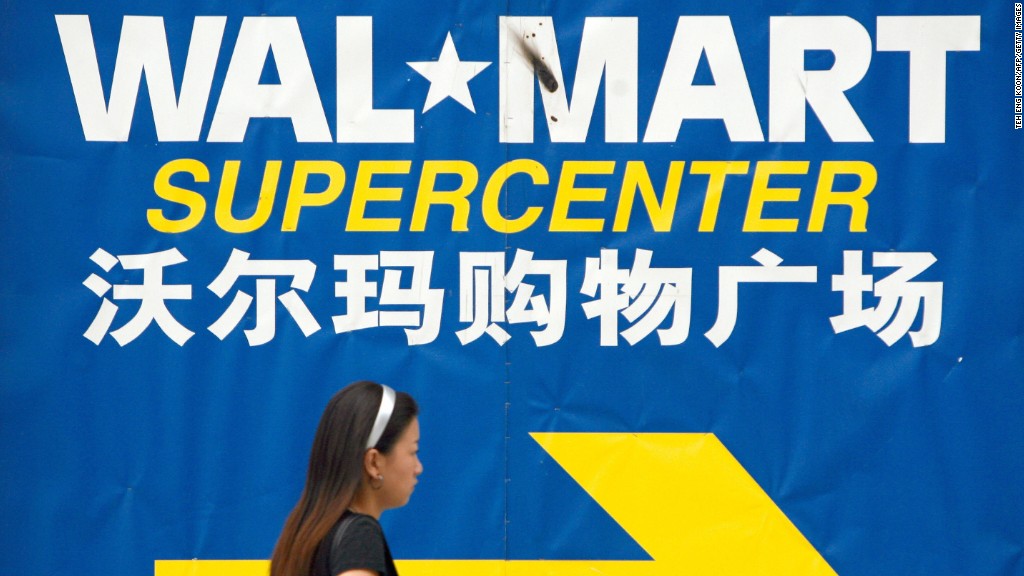
Big box retailers are having a tough time figuring out China.
The world's three largest retailers -- Wal-Mart, Tesco and Carrefour -- have all stumbled in China, leading them to scale back their ambitions.
Wal-Mart (WMT) said this month that it would close a number of stores in China. Earlier this year, Tesco (TESO) transferred its 131 stores and shopping mall business in China to a joint venture with a state-owned company.
Carrefour (CRERF) has also shuttered many stores, and is reported to be exploring a sale of its China and Taiwan businesses.
Hypermarkets -- big box stores that combine supermarkets and department stores -- first opened up in China's largest cities over a decade ago. And it's no wonder companies such as Wal-Mart have been keen to get a slice of the market.
It's a fast growing sector -- hypermarket sales in China rose to 445 billion yuan ($73 billion) in 2010 from about 18 billion in 2000. By some estimates, sales could reach 1 trillion yuan by 2015.
Related story: Six high-growth industries in China
But slower growth and fierce competition have made it hard for international retailers to turn a profit, despite the prospect of more consumer spending by the country's expanding middle class.

Experts say many foreign retailers don't understand how the behavior of Chinese consumers differs from their Western counterparts. Everything from the frequency of visits, to the mix of goods purchased, is likely to be very different for shoppers in China -- no matter how big the store may be.
"To win, players need to understand the Chinese market, and then learn how to operate in a way to meet the market on its own terms," said Daniel Hui of McKinsey. "Chinese consumers are used to shopping almost every day for fresh food ... And just because they can now do this in really big spaces doesn't mean they will change their habits."
Sun Art Retail -- a joint venture between Taiwan's RT Mart and France's Groupe Auchan -- has managed to leverage its local knowledge and become the leading big box retailer in China.
Sun Art's stores may look like Wal-Marts from the outside, but inside they recreate the look and feel of local street markets.
The chain has local management and offers discounted goods that vary according to regional tastes. And Chinese consumers love a bargain, according to Hui.
Related story: Tesco finds China market tough
Sun Art also saves money by renting less store space than its competitors. Homes tend to be smaller than in the West, so even if shoppers wanted to make bulk purchases, they can't because they have nowhere to keep them.
Stores could fare better by focusing on managing their stock levels and making sure they have the right selection of goods available, rather than building excess shelf space, experts say.
This approach has led to big gains for Sun Art. Third quarter profits soared 72%, and the chain continues to open new outlets.
Its competitors are scrambling to catch up, and some are changing their strategy.
Wal-Mart, for example, is trying to benefit from China's e-commerce shopping boom. The U.S. retailer bought a majority stake in Chinese online store Yihaodian last year. The deal gives Wal-Mart access to Yihaodian's 24 million registered users, and could provide more insight into the local market.
